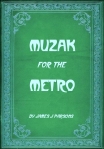Last time, we spoke about the very basics of doing a book cover?today, another integral piece of the puzzle, formatting!
Before I got into e-publishing, I thought I knew what publishers wanted when you submit your manuscript. There are certain protocols you?re supposed to follow?name in the upper left corner, word count in the upper right, etc. The purpose of this is for the agent or publisher to have a quick reference, and for the editor to be able to easily get around your work. In e-publishing, though, the writer is filling most of those roles, so the game is completely different.
So why not just write the book in MS Word the way you want it to look, upload it to Kobo or Amazon, and press publish?
If you do that, I?ll guarantee you one thing: the end product will look horrible.
The thing is, a lot of the formatting in MS Word?or other word processors for that matter?is done in the background, where you can?t see it. Here?s an experiment: go to the View tab,

Formatting Marks: note there are even dots to indicate the space between words.
and find the option that shows your formatting marks. (In Word, go to Options, Display, and Show All Formatting Marks.) Your manuscript will be riddled with symbols; this is coding Word inputs into your file as you?re writing to determine what the output will look like. What many people don?t realize is that Word is not a What-You-See-Is-What-You-Get program. Far from it!
Here?s another experiment. Copy a paragraph of your manuscript, open a blank file in Notepad, and paste it. The text should go, unbroken, on one line, and you?ll have to scroll to the right to see it all. This is because .txt files, unlike files from word processors, don?t have ?Word Wrap,? meaning that the text will go on forever until a new paragraph is started. Looks hard to read, right? Surely we want our manuscripts to ?wrap? when we format them for eBooks, right?
Actually, no. The thing is, there?s no standard for electronic books. Many?I?d even say most?go with the ePub format, while others?like the ubiquitous Amazon Kindle books?are .mobi files. There are several other formats; the point is, they?re all programmed differently. So when you upload a particular file to, say, Kobo, it might look vastly different when Amazon gets a hold of it. The difference comes in how those files interact with the formatting marks I mentioned earlier.
I haven?t experimented with every kind of file, so I can?t tell you yet which works best?what I can say is that, for the sake of your own sanity, the easiest thing to do is start with a raw file. I do a lot of my writing in MS Word through Google Docs?because it?s accessible anywhere, even on my phone?and copy and paste the text into Scrivener. Scrivener can output into several file types, including Real Text Format (rtf) or the MS Word .doc. Of, you can export it as a text file. This is the raw text?no formatting at all.
What I?ve been doing is exporting as a text file, then opening up a program called Sigil, a WYSIWYG editor (unlike Word!). Sigilis basically an HTML editor, meaning you?ll be coding in the same way you would a web page?or an eBook. It?s really simple to use, and you don?t need any experience with HTML. Just copy and paste your work, create headings (which will create a table of contents for you), and images if you have them, italicize and bold your text if need be. That?s it! There?s a handy tutorial here, and the whole process isn?t very long or arduous (though poetry is another story?it took a while to get Muzak for the Metro to look right).
It might even be simpler, though. I haven?t tried it yet, but I imagine you could output your Scrivener files as an eBook, which would open in Sigil. This way, you do most of your formatting as you work in Scrivener, and use Sigil for touch-ups.
Once that?s done, you use Calibre to tweak things like metadata and making sure everything is ?just so.? But that?s a topic for another post.
This is only the tip of the iceberg when it comes to eBook formatting, but it?s a start, and it?s a lot easier than some might lead you to believe. If you want to check out a sample of just how this turns out, you can go to Amazon to find the eBook I created with this process (including a cover) this weekend, Muzak for the Metro. It?s only $0.99, and it includes a poem that wasn?t in the original collection?plus an excerpt from ?Room With a Corpse,? a short story which will appear in my forthcoming collection The Astrologers and Other Stories. Check it out!
Like this:
Be the first to like this.
Source: http://jparsonswrites.wordpress.com/2012/09/26/formatting-ebooks-for-newbs/
arnold palmer invitational ryan madson louisiana primary syracuse basketball chipper jones chipper jones dancing with the stars cast
No comments:
Post a Comment
Note: Only a member of this blog may post a comment.